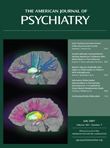To The Editor: We agree with much of what Dr. Janicak et al. state regarding the limitations of our study. Indeed, in the method and discussion sections of our article we directly addressed the issues concerning optimal therapeutic administration of rTMS, effects of age on rTMS, ECT-related cognitive side-effects, as well as rater blinding.
Concurrent medications, which are described in Table 1 of our article, were well-balanced between our two study groups. Because anticonvulsants and benzodiazepines can alter cortical excitability, they may affect response to rTMS. We reported that the interaction between treatment groups and anticonvulsant/benzodiazepine use did not have a significant effect on the analysis of covariance (ANCOVA) model for the primary outcome. In the absence of evidence that any of the other medications listed have major effects on rTMS response and because group sizes were small, we deemed it inappropriate to perform multiple analyses to explore these possibilities.
The degrees of freedom in Tables 2 and 3 are correct. As explained in the statistical analyses section, baseline measures were included in the ANCOVA-type models as covariates. Thus, our interaction tests examined whether group differences varied between the end of treatment and at the 6-month follow-up (i.e., two time points, after adjusting baseline values to a common value).
Unfortunately, we do not understand how Dr. Janicak et al. arrived at the figure of 500 subjects by extrapolating from the data presented in our article. Additionally, their proposed measure of effect size fails to incorporate baseline differences. Moreover, the standard deviations of the change scores were not presented in our article. In general, we recommend that post hoc power calculations are probably best avoided.
ECT is the most powerful treatment available for severe depression. If anything, it is perhaps “unfair” to compare a fledgling potential treatment such as rTMS with ECT. Optimal conditions for the therapeutic use of rTMS have yet to be established. In an independently-funded randomized trial (N=59) of adjunctive rTMS for depression with a 4-month follow-up, we did not find a clinically or statistically significant difference between real or sham rTMS (unpublished study). The results of a large (N=301), multicenter, industry-funded (Neuronetics, Inc.) randomized trial of real and sham rTMS (up to 60,000 pulses [120% of MT] administered over 4 weeks) have recently been reviewed by the Food and Drug Administration Neurological Devices Panel (http://www.fda.gov/cdrh/panel/summary/neuro-012607.html). There was no significant difference between the real and sham rTMS groups on the primary outcome measure, and the success of blinding was not formally assessed. However, treatment site pain was reported in 35.8% of subjects in the real rTMS group compared with only 3.8% of subjects in the sham group, raising the probability that blinding was difficult to maintain and that it may have enhanced the placebo effect.
Finally, we do not agree that it is premature to conclude that ECT is more effective than rTMS for treating depression. Additionally, in the absence of robust evidence for the clinical effectiveness of rTMS for the treatment of depression and until such evidence becomes available, we do not recommend further rTMS-ECT comparison trials.

